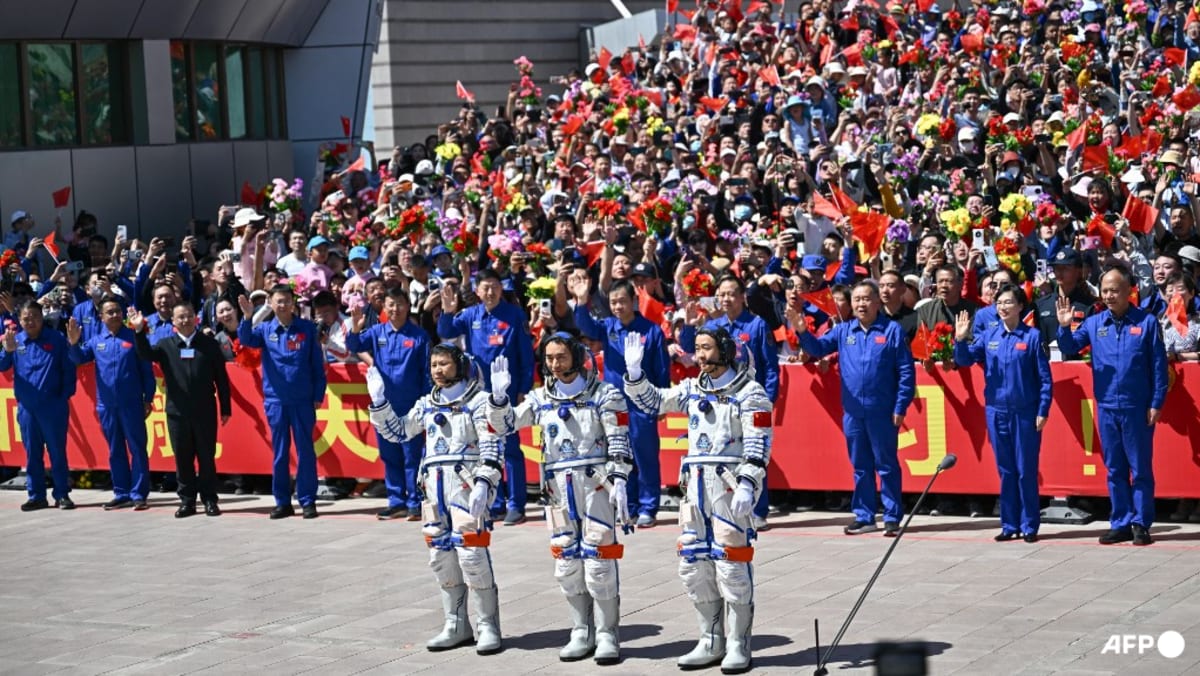The crew will work on Tiangong for six months, carrying out experiments in physics and life sciences and installing protective equipment against space debris.
For the first time, they will also bring aboard planarians – aquatic flatworms known for their regenerative abilities.
The team will also conduct spacewalks, replenish supplies and carry out general maintenance on the space station.
Three astronauts currently aboard Tiangong are scheduled to return to Earth on Apr 29 after completing handover procedures.
Busloads of space enthusiasts waited by a barren highway several hours ahead of Thursday’s launch, braving the high desert sun to catch a glimpse of the rocket perched on the horizon.
A kiosk by the entrance to the launch base did brisk trade in toy rockets and mission-themed memorabilia.
JEWEL IN THE CROWN
During a government tour on Wednesday afternoon, AFP journalists saw the rocket ensconced in a sky-blue launch tower, surrounded by red flags as workers in blue jumpsuits made final checks before the launch.
China’s space programme is the third to put humans in orbit and has also landed robotic rovers on Mars and the moon as it seeks parity with the world’s two most established celestial powers, the US and Russia.
Crewed by rotating teams of three astronauts every six months, Tiangong – whose name means “celestial palace” in Chinese – is the jewel in its crown.
China has been excluded from the International Space Station since 2011, when the US banned NASA from collaborating with Beijing.
It has since sought to bring other countries into its space programme, and in February signed a deal with longtime ally Pakistan to bring the first foreign astronaut aboard Tiangong.
As part of this process, “two Pakistani astronauts will be selected to come to China for training”, the CMSA confirmed on Wednesday.
